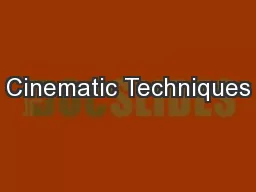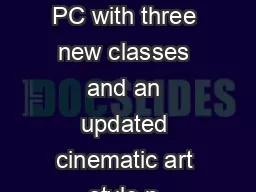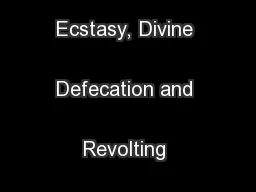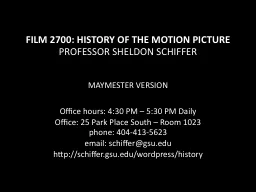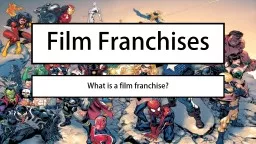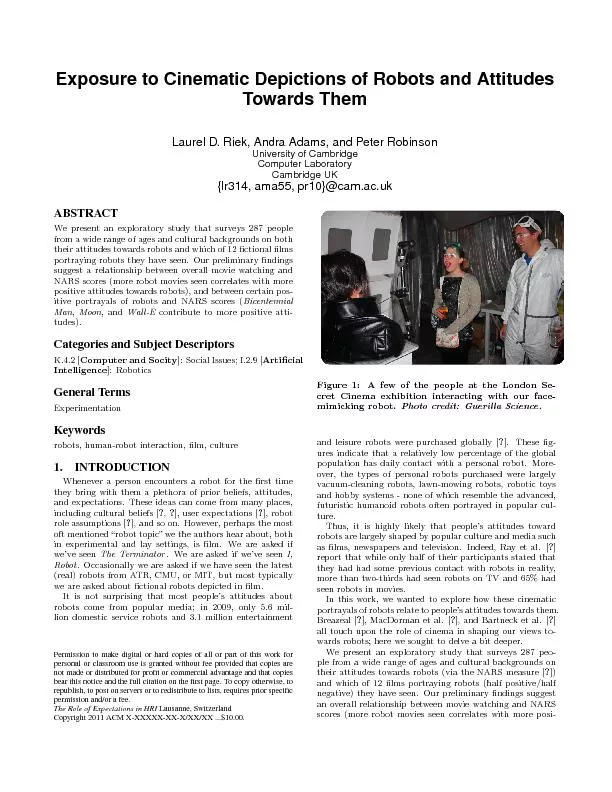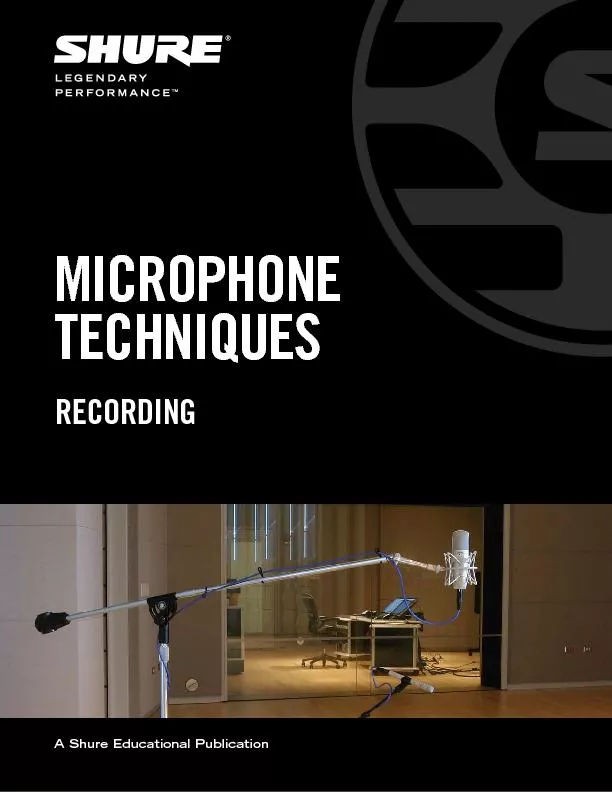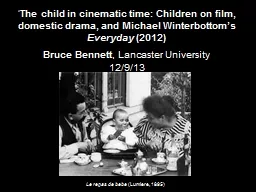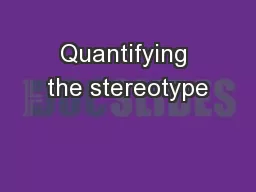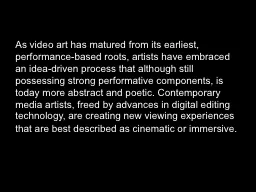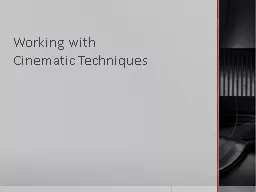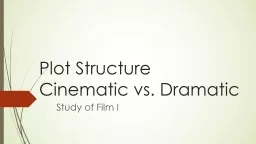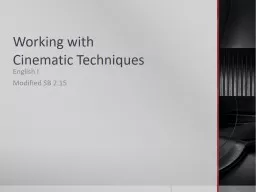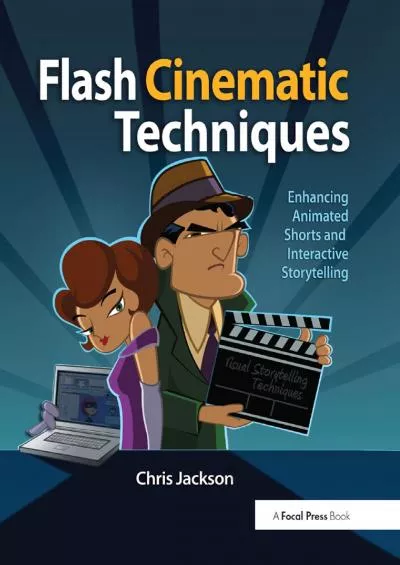PPT-Cinematic Techniques
Author : lois-ondreau | Published Date : 2017-03-30
How movies are made Cinematic techniques the methods a director uses to communicate meaning and to evoke particular emotional responses in viewers Shots and Framing
Presentation Embed Code
Download Presentation
Download Presentation The PPT/PDF document "Cinematic Techniques" is the property of its rightful owner. Permission is granted to download and print the materials on this website for personal, non-commercial use only, and to display it on your personal computer provided you do not modify the materials and that you retain all copyright notices contained in the materials. By downloading content from our website, you accept the terms of this agreement.
Cinematic Techniques: Transcript
Download Rules Of Document
"Cinematic Techniques"The content belongs to its owner. You may download and print it for personal use, without modification, and keep all copyright notices. By downloading, you agree to these terms.
Related Documents

